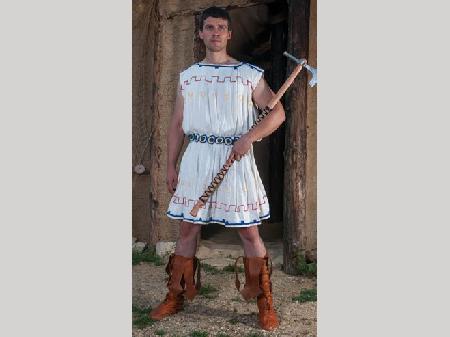Thracians

The Thracian lands during the Antiquity
Many travelers and scholars described the vast lands of the Thracians through the Antiquity. Interesting information about the names of rivers, lakes and seas has been preserved, many of which have reached our present day.
More
THE SILVER TREASURE FROM THE VILLAGE OF BOROVO
The Borovo silver treasure is one of the most valuable and famous finds linked to the Thracian era. With its exquisite workmanship, its artefacts have become a striking example, showing the strength and power of the ancient Thracians. It has been discovered buried in the ground, and to this day experts are still arguing as to why it was buried.
More
The Thracian peltast
The peltast was a lightly-equipped Thracian warrior named after his shield (the “pelta”). The shield had a moon crescent shape, was made of wicker and covered with goat or sheepskin. The peltasts wore light tunics and fox hats.
More
The Thracian who defied the gods
During a thunderstorm, the Thracians used to go out in the open and fire arrows at the sky. With this behaviour, they believed they showed the god Zeus (among the Thracians also called Sbeldturdos or Gebeleizis) that they were not afraid of him and that they were the sole masters of their own lives and destinies.
More
The Thracians, as old as the hills
The emergence of the Thracian ethno-cultural community dates back to the Middle and Late Bronze Age. It is determined by the achievements and specific occurrences in the field of mythology, architecture, sculpture, painting, lifestyle and artistic crafts.
More
Thracian bread
The Thracians prepared several types of bread - with leaven, with herbs or unleavened. The yeast was made from flour and grape juice. The fermenting and kneading process is slow, but the baked breads were large and delicious.
More